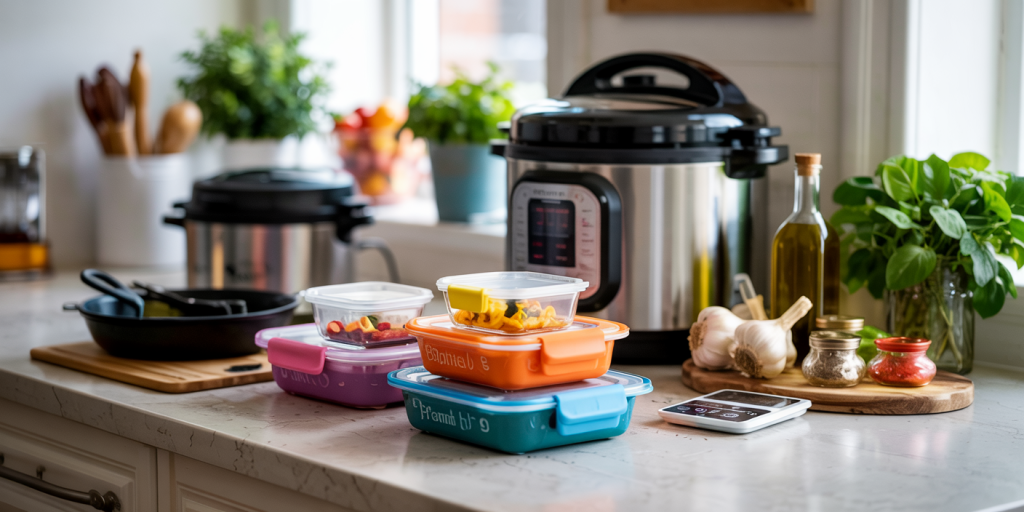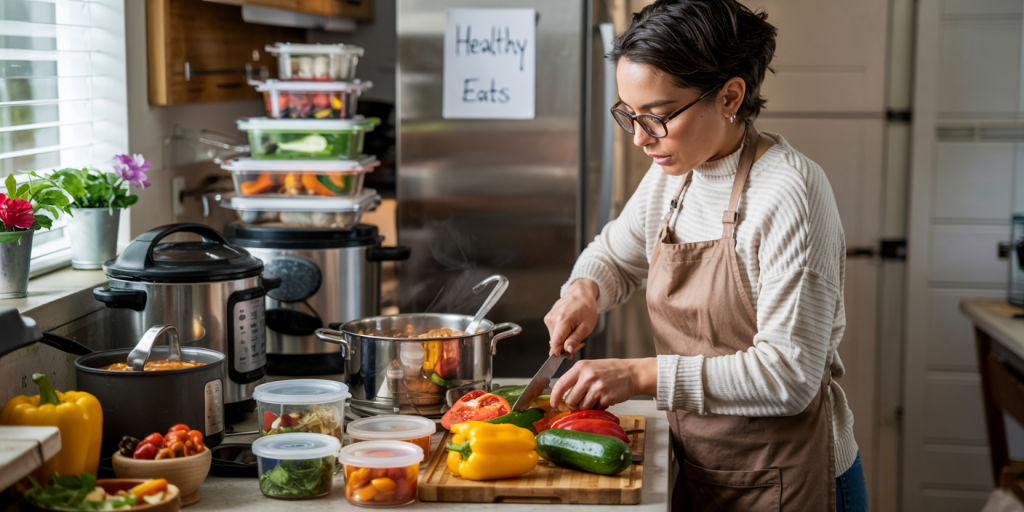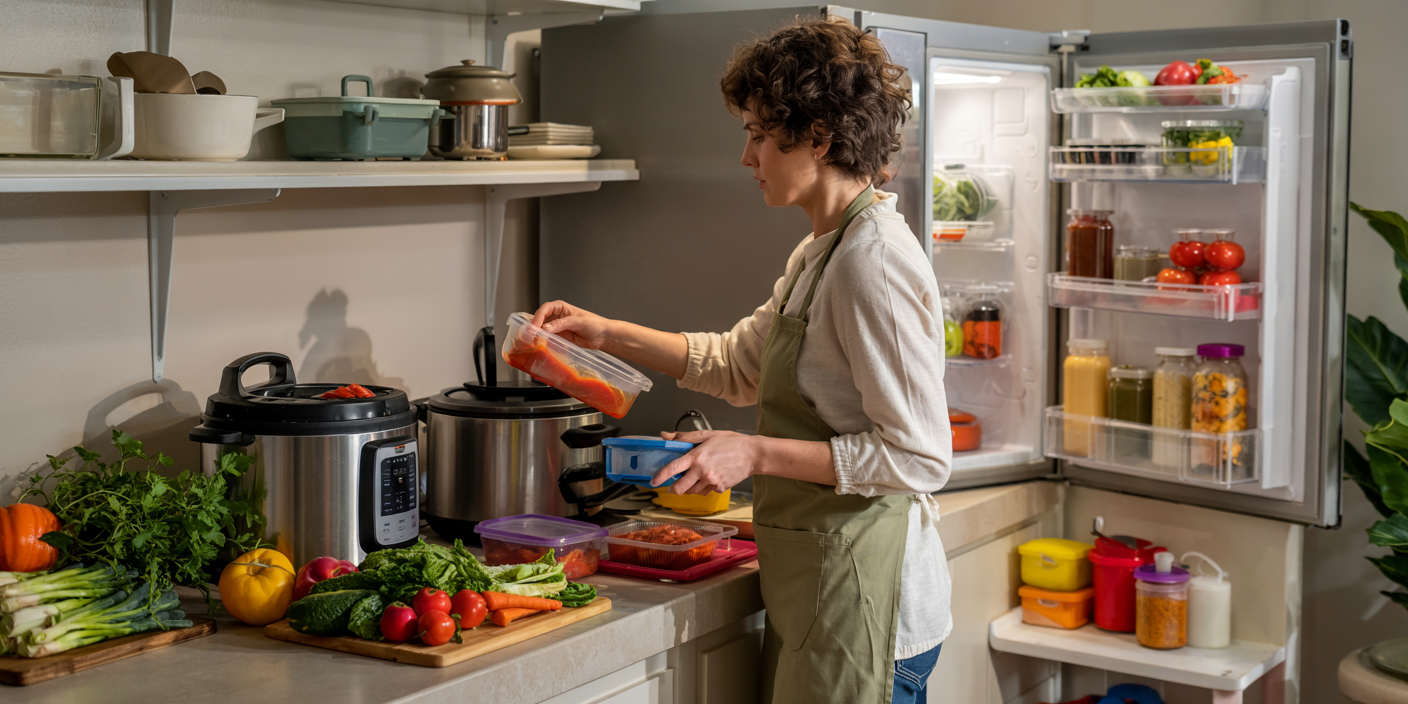Meal prepping has become an increasingly popular strategy for maintaining a balanced diet, saving time, and reducing food waste. With the average American spending over 37 minutes per meal on preparation and cooking (Bureau of Labor Statistics, 2023), meal prepping can drastically cut down this time while ensuring nutritious meals throughout the week. This article will explore practical methods and insights to help you master the art of meal prepping efficiently and effectively.
Why Meal Prep Matters: Balancing Time, Health, and Budget
Meal prepping allows individuals to plan, prepare, and portion meals in advance, typically for the upcoming week. One major advantage is time optimization. According to a 2022 survey by The Hartman Group, 62% of consumers reported that they meal prep to save time on busy weekdays. By dedicating a few hours once or twice a week, you can free up daily cooking time, allowing more focus on work, family, or leisure activities.
Health benefits also play a critical role in the rise of meal prepping. Research published in the *Journal of Nutrition Education and Behavior* (2021) found that people who frequently prepared meals at home consumed 28% fewer calories and had healthier nutrient profiles than those who ate out more often. Moreover, meal prepping helps control portion sizes and reduces impulsive, often unhealthy snacking. Financially, bulk buying ingredients and minimizing food waste can reduce weekly grocery expenses by as much as 20% (USDA, 2022). These combined benefits make meal prepping a holistic approach to better living.
Essential Tools and Kitchen Staples for Meal Prepping Success
To streamline the meal prep process, having the right tools is foundational. Investing in quality containers—preferably BPA-free glass or durable plastic—ensures portability and longevity. Containers with compartments or stackable designs optimize fridge space and facilitate portion control. An airtight seal prevents spoilage and helps maintain food freshness for up to five days when refrigerated properly.
In addition to containers, kitchen appliances like slow cookers, instant pots, and sheet pans simplify cooking bulk meals. A food scale aids in measuring ingredients for precise portion sizes, which is essential for goal-oriented meal prepping, such as weight loss or muscle gain. Basic kitchen staples—including olive oil, garlic, onions, dried herbs, and spices—allow versatility in flavoring meals without the need for numerous perishable items.

Table 1: Recommended Meal Prep Kitchen Essentials
| Category | Recommended Items | Benefits |
|---|---|---|
| Containers | Glass BPA-free, leak-proof sets | Longevity, microwave/oven safe, portion control |
| Appliances | Instant pot, slow cooker, blender | Versatility, faster bulk cooking |
| Tools | Food scale, sharp knives, cutting boards | Accuracy, safety, efficiency |
| Pantry Staples | Olive oil, garlic, dried herbs | Flavor enhancement, long shelf life |
Shares from home cooks and meal prep bloggers reveal that setting up your kitchen with these essentials is often the first step toward consistent meal prepping success.

Planning Your Weekly Menu: Practical Strategies to Stay on Track
Planning is arguably the most crucial aspect of meal prepping. Start by assessing your weekly schedule and dietary goals. For instance, a working professional who lunches out daily may focus meal prep on breakfast and dinner, while someone with a more flexible schedule might prep full meals for all occasions. Tracking ingredients already in your pantry reduces duplicate purchases and minimizes waste.
A pragmatic approach is to choose 2-3 base proteins (e.g., chicken breast, chickpeas, lean ground beef), 2-3 carbohydrate sources (e.g., quinoa, brown rice, sweet potatoes), and 3-4 vegetables to rotate throughout the week. For example, a meal prep plan could include grilled chicken with quinoa and steamed broccoli on Monday and Wednesday, while Tuesday and Thursday use chickpeas with brown rice and roasted carrots.

Leveraging recipes with overlapping ingredients simplifies shopping and reduces cost. Apps like Paprika or Mealime assist in building customized weekly menus, often integrating nutritional details to align with your health objectives. A sample weekly menu template can provide clarity:
| Day | Breakfast | Lunch | Dinner |
|---|---|---|---|
| Monday | Overnight oats | Grilled chicken bowl | Stir-fry tofu & veggies |
| Tuesday | Greek yogurt & nuts | Chickpea salad | Baked salmon & quinoa |
| Wednesday | Smoothie bowl | Turkey wraps | Beef & vegetable stew |
Effective planning not only streamlines grocery shopping but also ensures nutrition diversity and enjoyment throughout the week.
Mastering the Prep Day: Step-by-Step for Efficient Execution
Executing meal prep without hassle hinges on a well-organized prep day routine. Many experts recommend designating a Sunday or whichever day suits your lifestyle for preparation. Begin with ingredient washing, chopping, and portioning to speed up the cooking steps. For example, prepare raw vegetables (like bell peppers and cucumbers) in snack-size containers to grab on the go.
Next, cook bulk proteins and grains simultaneously using multi-functional appliances. An instant pot can steam rice in 10 minutes while slow cooking chicken on a low setting. This multi-tasking reduces total active cooking time dramatically. Portion cooked meals immediately into containers to prevent spoilage and aid with portion control.
Labeling containers with date and contents is a simple practice that maintains freshness awareness and prevents meal fatigue. In real-life application, meal prepper Sarah Connor from Austin, TX, claims that her 90-minute prep routine every Sunday has allowed her to maintain her weight loss goals without feeling deprived or overwhelmed. Her favorite strategy involves rotating between roasted, grilled, and stewed proteins to keep meals interesting.
Storage and Reheating: Maintaining Food Safety and Taste
Proper storage is essential for preserving meal prep quality. The USDA recommends refrigerated meals be consumed within 3-4 days to avoid bacterial growth. For longer storage, freezing meals is an excellent solution. However, not all foods freeze well; for example, leafy greens often become mushy after thawing, while proteins like chicken freeze effectively.
When freezing, use airtight freezer bags or containers designed for low temperatures to prevent freezer burn. Organizing meals by date on shelves or in the freezer helps with meal rotation and reduces food waste. Thaw meals in the refrigerator overnight rather than at room temperature to maintain safety.
Reheating also affects meal prep satisfaction. Microwaving is the most common method but can make foods soggy or dry. Adding a splash of water, covering containers loosely with a microwave-safe lid, and stirring halfway through heating can improve moisture retention. Alternatively, reheating in an oven or air fryer restores textures better, especially for roasted or grilled dishes.
A comparative summary of storage methods and their pros and cons is shown below:
| Storage Method | Shelf Life (Approx.) | Pros | Cons |
|---|---|---|---|
| Refrigeration (4°C) | 3-4 days | Quick access, retains flavor | Short shelf life, requires planning |
| Freezing (-18°C) | 1-3 months | Long-term storage, minimizes waste | Texture may suffer, requires thawing |
| Vacuum Sealing + Freeze | 3-6 months | Extends freshness, prevents freezer burn | Requires special equipment |
Understanding these factors aids meal preppers in maintaining food quality and safety throughout the week.
The Future of Meal Prepping: Trends and Technological Innovations
Meal prepping is evolving with advancements in technology and consumer preferences emphasizing health, convenience, and sustainability. Personalized nutrition powered by AI allows future meal plans to be tailored not only to preferences but also genetic, metabolic, and lifestyle data. Companies like Habit and Nutrigenomix offer testing kits that integrate with meal prep apps to provide hyper-customized meal recommendations, a trend likely to expand.
Sustainability is also driving innovation. The rise of plant-based proteins and zero-waste cooking methods sync perfectly with meal prep ideals. Smart kitchen appliances such as app-controlled instant pots or refrigerators with integrated inventory tracking streamline the process further by suggesting recipes based on available ingredients.
Urban dwellers with limited kitchen space are benefiting from modular meal prep kits and communal kitchens, which reduce individual burden while maintaining access to nutritious meals. Studies from the Food Marketing Institute (2023) indicate that 45% of consumers increased their use of meal prep services amid urbanization and busy lifestyles.
In the next decade, we may see meal prepping transcend individual practice into integrative lifestyle systems combining AI planning, sustainable sourcing, and smart cooking to accommodate diverse nutritional needs seamlessly.
—
Meal prepping is a strategic and accessible approach to improving diet quality, saving time, and reducing costs. With proper planning, essential tools, and efficient execution, anyone can transform their weekly meal routine. By embracing future innovations and sustainability principles, meal prepping is set to become an even more vital component of healthy living. Implementing these guidelines will empower you to enjoy delicious, convenient, and nutritious meals every day of the week.

Deixe um comentário